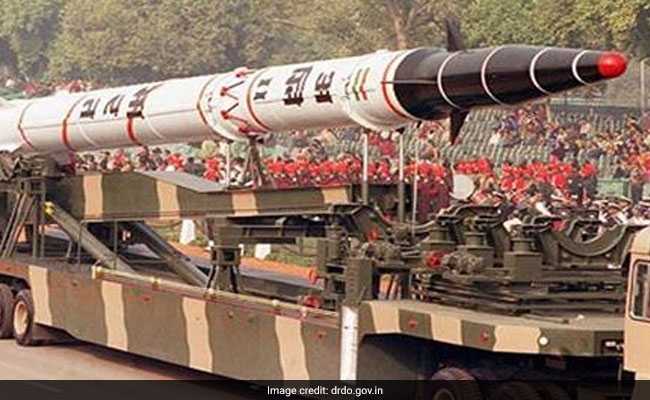Agni - 2
| Name | Agni-II |
|---|---|
| Image |  |
| Country of origin | India (DRDO/BDL) |
| Type | Medium range ballastic missile |
| Range | 2000-3500 km |
| Flight ceiling | 405 km |
| Length | 21 m |
| Diameter | 1.3 m |
| Mass | 16000 kg |
| Warhead | 1000kg Conventional high explosive-unitary, penetration, sub-munitions, incendiary, thermobaric, strategic nuclear weapon |
| Max Speed | 3.5 km/s |
| Propulsion | Solid fuel |
| Engine | Dual stage solid rocket motor |
| Guidance | Mid-course: Ring laser gyro inertial navigation system. Optionally augmented by GPS/NavIC satellite guidance Terminal: Radar scene correlation. Upgraded to active radar homing. |
| Launch platform | Ashok Leyland/Tata transporter erector launcher/rail mobile |
| Service period | 2004-Present (2011-Present with full capability) |
| Accuracy | 30–40 m CEP |
| Description | The Agni-II is a crucial component of India’s strategic nuclear deterrence, a medium-range ballistic missile developed by the Defence Research and Development Organisation (DRDO). This two-stage, solid-fueled missile boasts a formidable range of 2,000 to 3,500 kilometers, allowing it to reach a significant portion of Asia. With a payload capacity of up to 1,000 kilograms, it can carry a variety of warheads, including nuclear payloads. The Agni-II’s advanced guidance systems, including inertial navigation and potentially GPS/NavIC assistance, ensure high accuracy. Its road-mobile launch capability enhances its survivability and rapid deployment. The Agni-II has undergone rigorous testing and has been successfully inducted into service with the Indian Army’s Strategic Forces Command. It plays a pivotal role in maintaining India’s strategic stability and enhancing its national security. |
| Website | https://www.drdo.gov.in/ |
Disclaimer: This information is based on publicly available sources and should be considered for general knowledge purposes only.